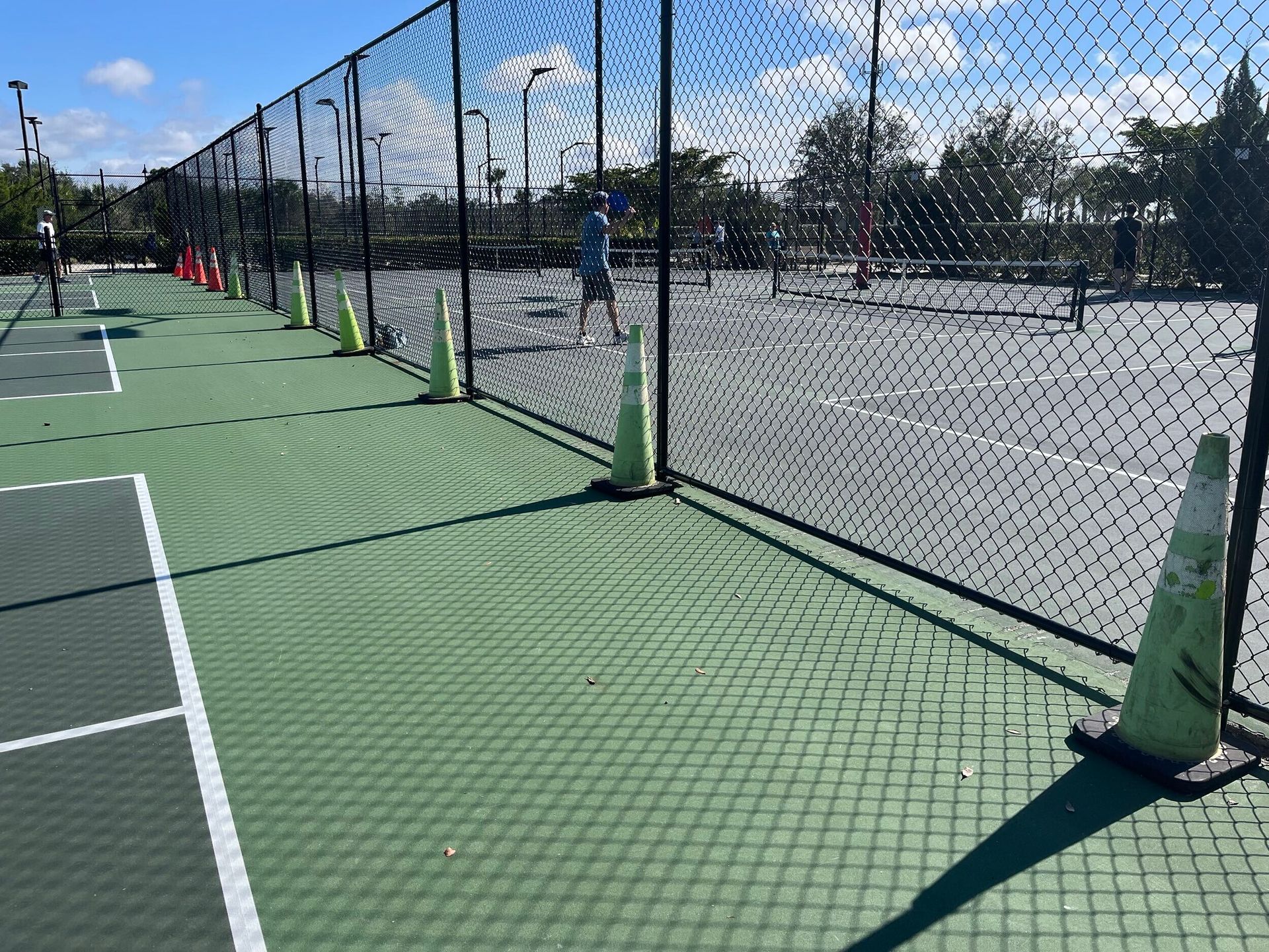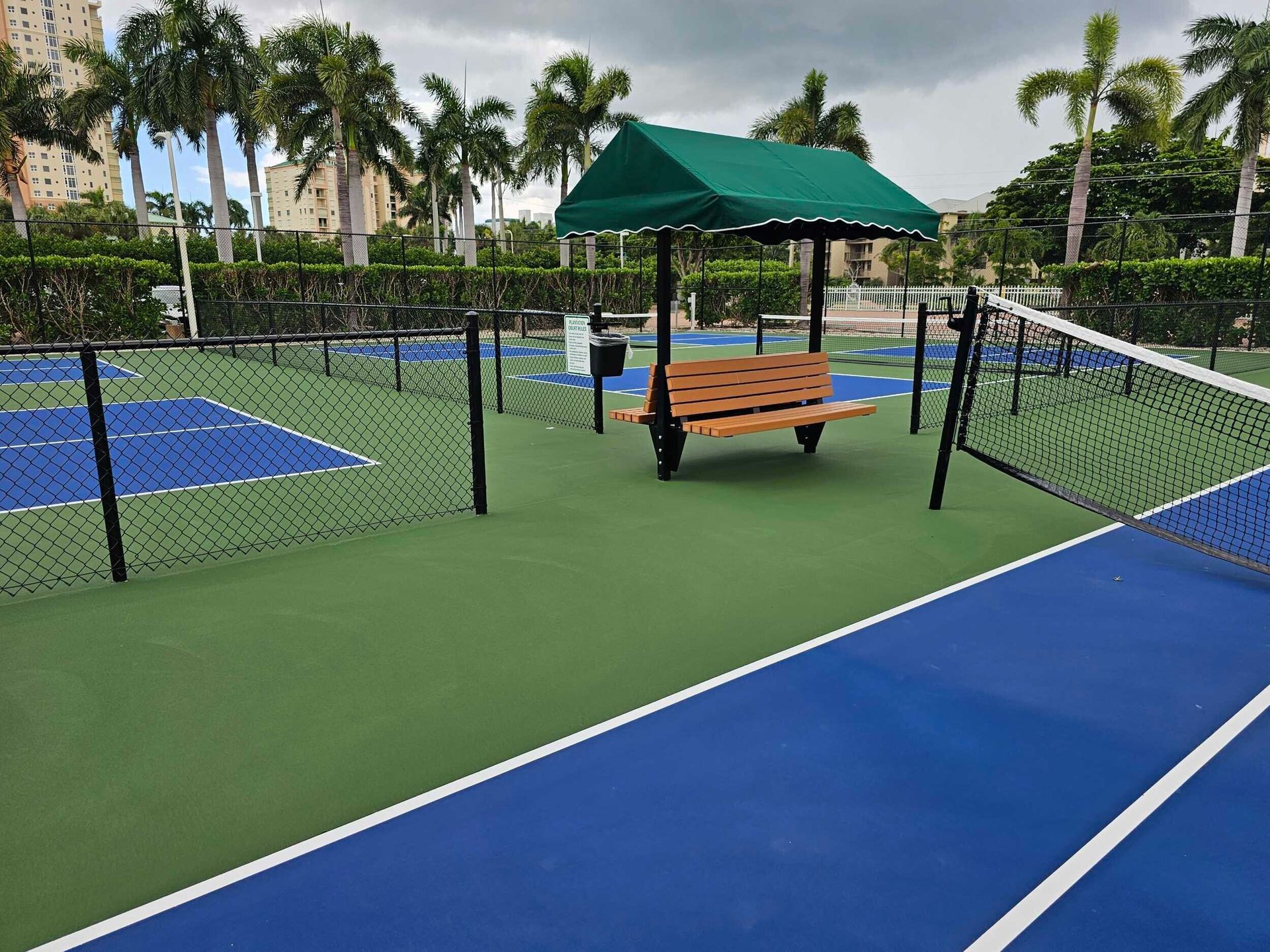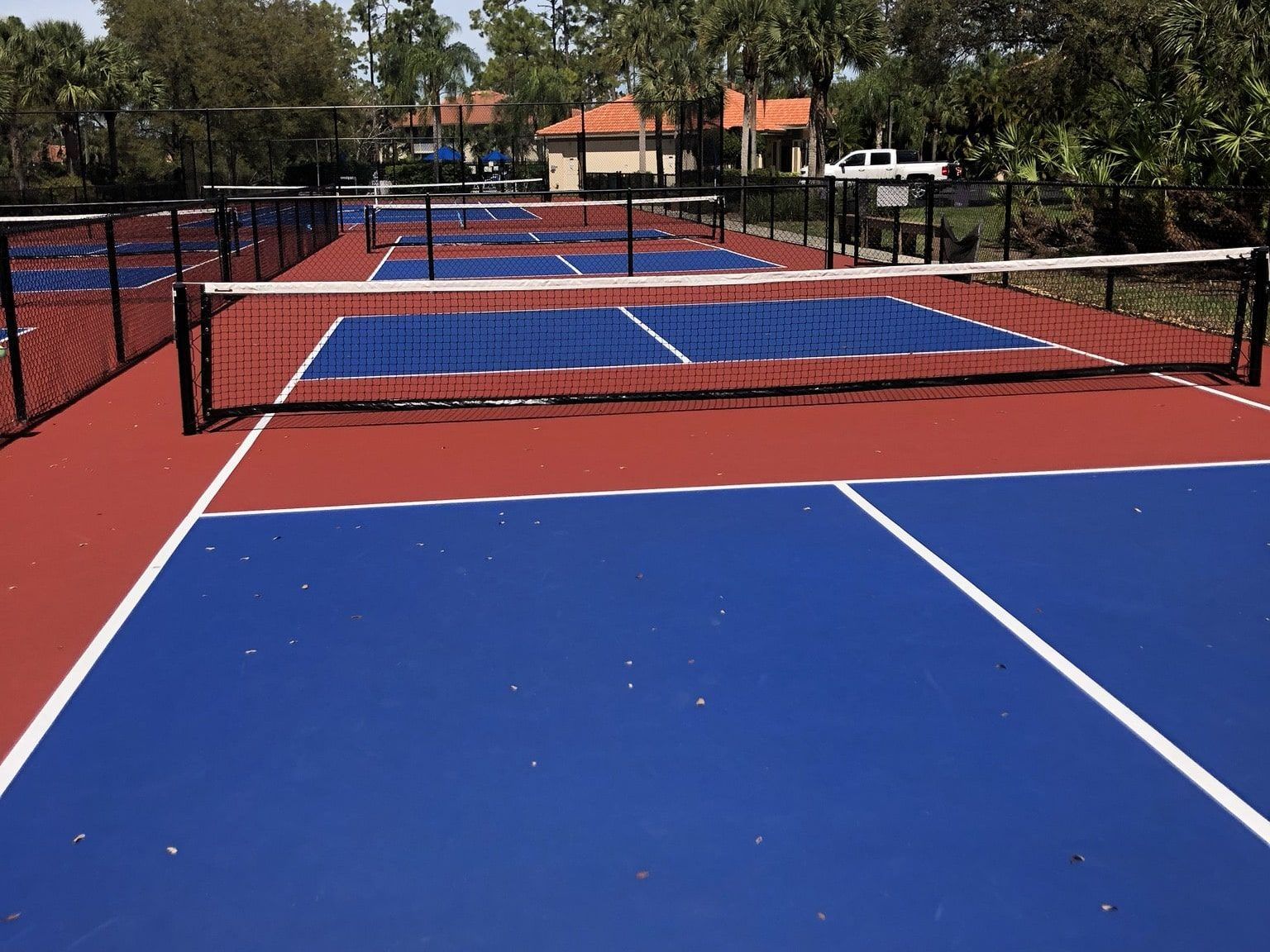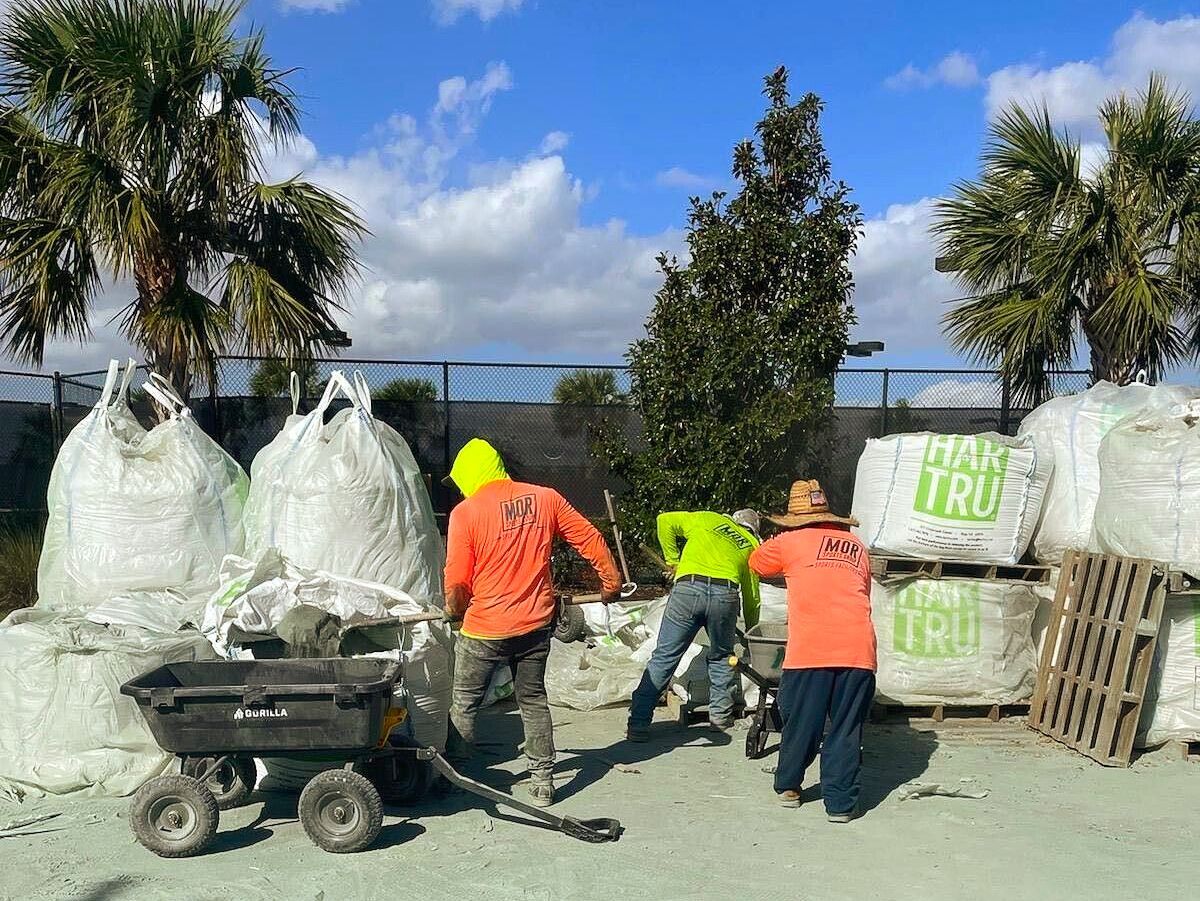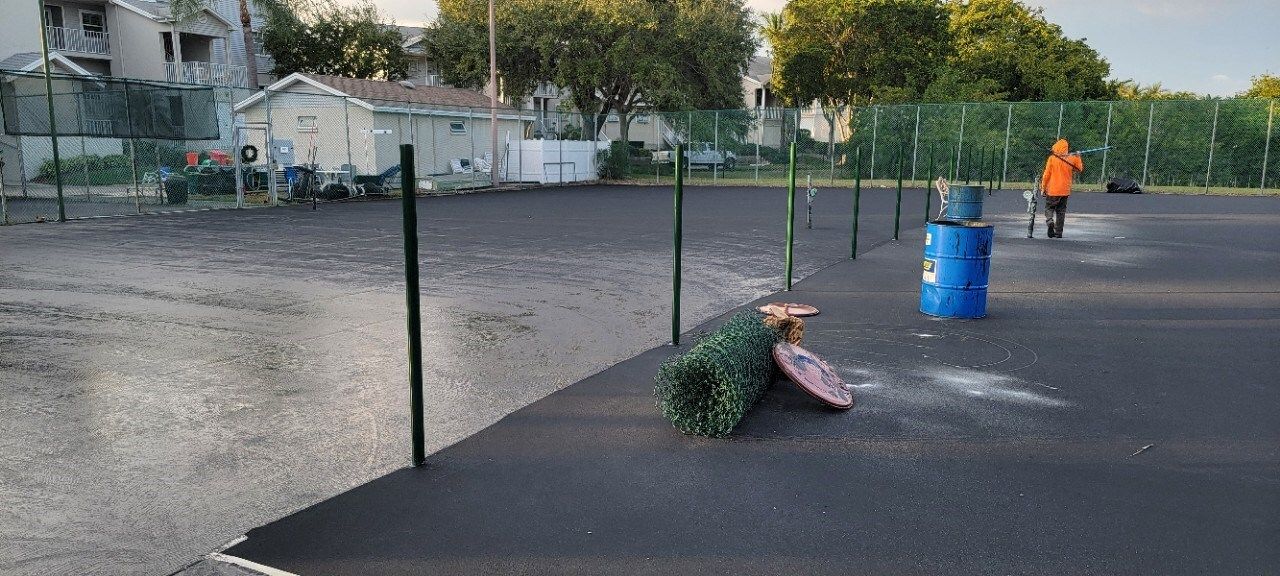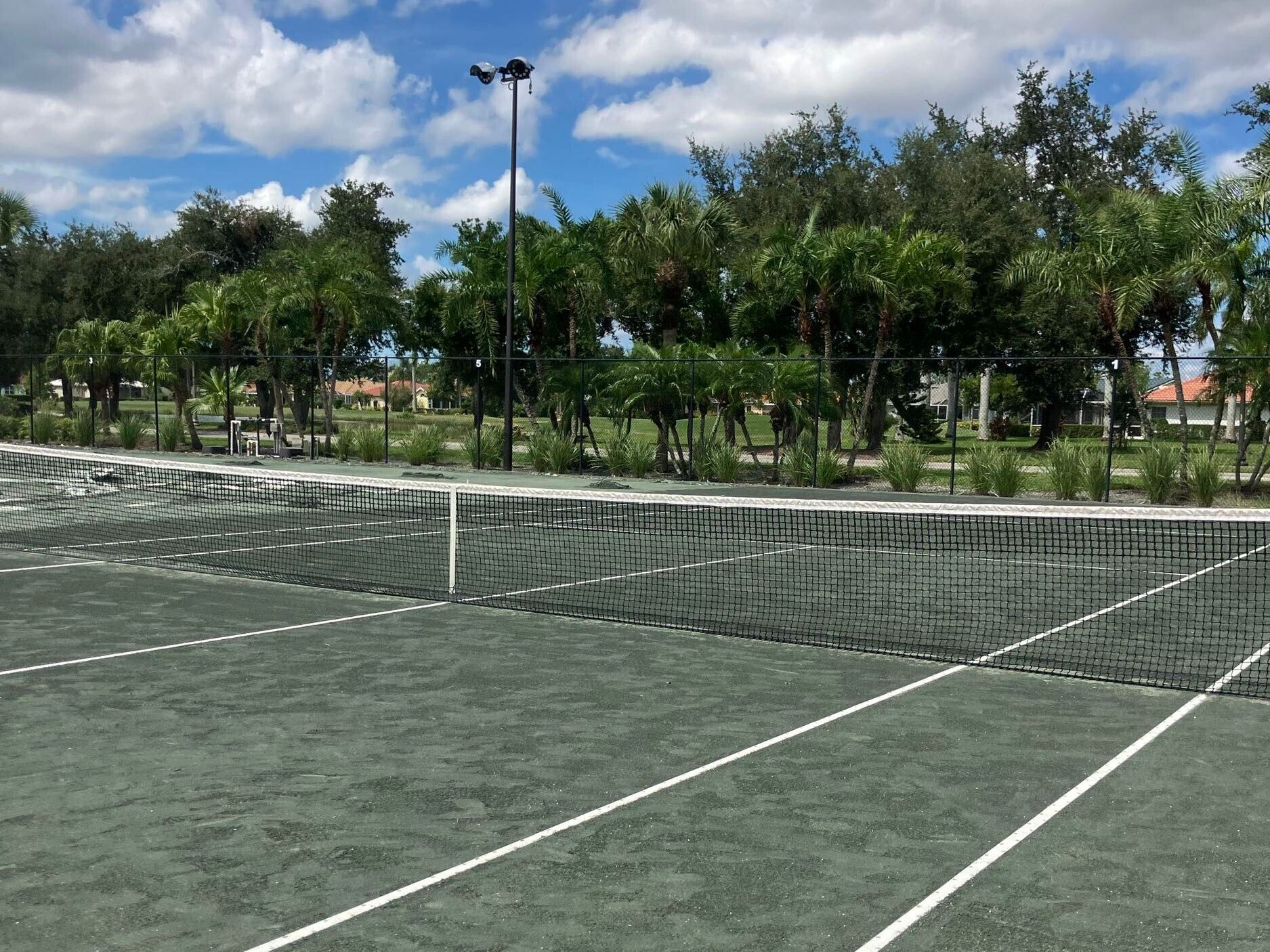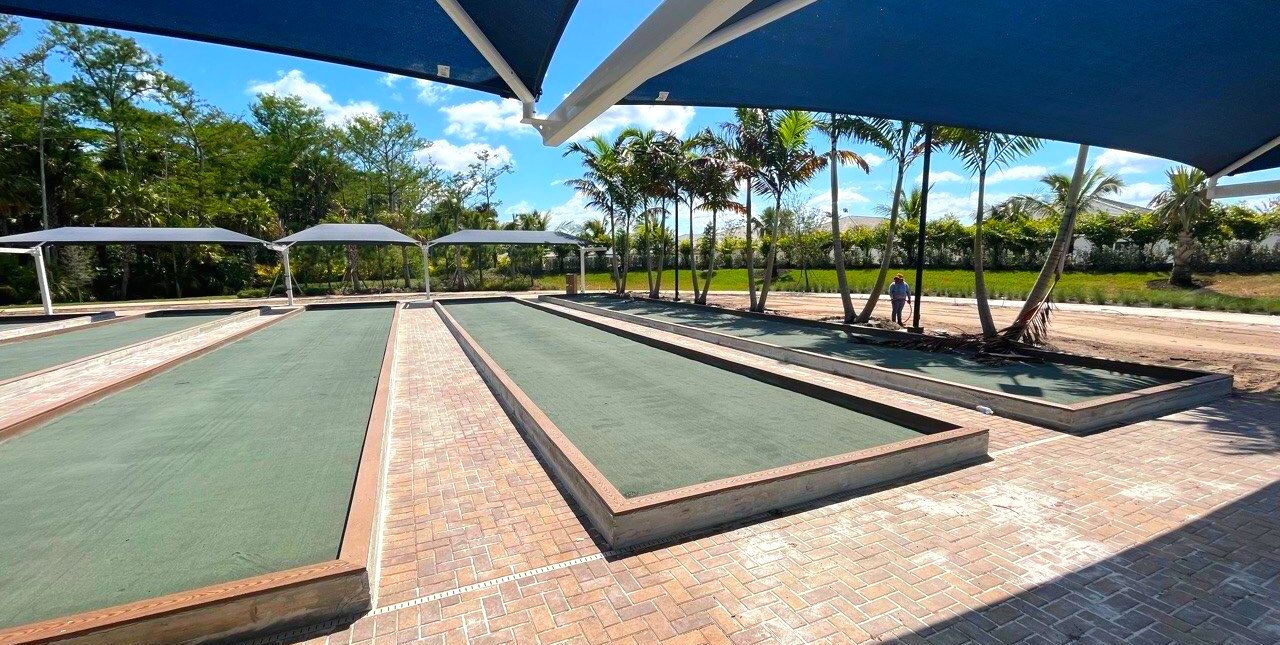Eco-Friendly Options for Tennis Court Resurfacing
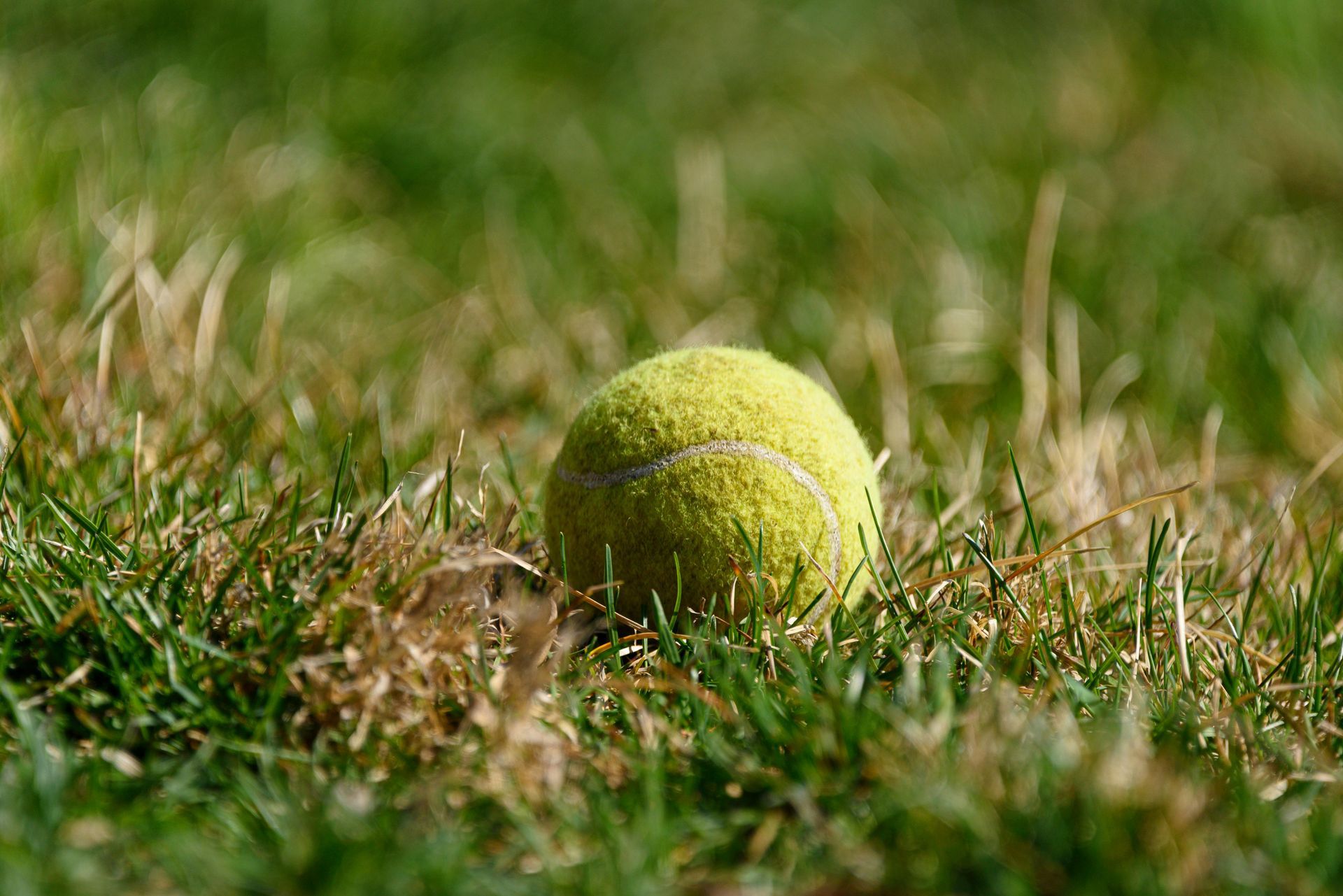
Traditional resurfacing generates millions of pounds of waste annually, with asphalt production contributing 1.3% of global CO₂ emissions. Eco-friendly alternatives reduce waste, lower energy use, and promote sustainability. From sustainable materials to energy-efficient upgrades, here’s how you can make your tennis court more eco-friendly.
Why Choose Sustainable Tennis Court Resurfacing?
Resurfacing a tennis court isn't just about making it look new. It’s about improving playability, safety, and durability. Choosing eco-friendly resurfacing methods benefits both the environment and your wallet.
Environmental Impact of Traditional Resurfacing
Many traditional resurfacing methods rely on materials and processes that leave a significant carbon footprint. These methods often involve:
- Heavy chemical use – Standard resurfacing coatings may contain toxic substances that can leach into the soil and water.
- High energy consumption – Asphalt resurfacing requires heating materials at high temperatures, leading to increased emissions.
- Waste generation – Old asphalt, rubber, and coatings are often discarded, adding to landfill waste.
Benefits of Green Resurfacing Practices
Opting for eco-friendly resurfacing methods isn’t just about sustainability. It comes with real advantages:
- Longer-lasting materials – Many green surfacing options are more durable than conventional ones.
- Reduced maintenance costs – Less wear and tear means fewer repairs in the long run.
- Better playing conditions – Many green materials improve grip, shock absorption, and overall performance.
For more details on how sports infrastructure is embracing sustainability, visit Green Sports Alliance.
Sustainable Materials for Tennis Court Resurfacing
The materials used in resurfacing make a huge difference in the environmental impact of a tennis court. Traditional materials like petroleum-based asphalt can be replaced with sustainable alternatives.
Recycled Rubber and Plastics
Recycled rubber from old tires and plastic waste can be turned into high-performance court surfaces. These materials offer excellent shock absorption, which reduces joint stress for players. They also help reduce the massive amount of rubber and plastic waste that ends up in landfills.
Eco-Friendly Surface Coatings
Many resurfacing projects use coatings that contain harsh chemicals. New eco-friendly coatings are made from water-based, non-toxic materials. These coatings:
- Improve UV resistance to prevent fading.
- Offer better grip and traction for safer play.
- Require less maintenance over time.
Permeable Pavement Systems
Permeable pavements allow rainwater to seep through the surface instead of creating runoff. This prevents flooding around the court while naturally filtering rainwater. These surfaces are ideal for areas prone to heavy rain and can contribute to overall water conservation.
Energy-Efficient Upgrades for Tennis Courts
Lighting plays a crucial role in extending playtime, but traditional floodlights consume a lot of electricity. Upgrading to energy-efficient lighting options helps reduce both power bills and carbon footprint.
LED Lighting for Reduced Energy Consumption
LED lights use up to 75% less energy than traditional bulbs and last much longer. They provide better illumination with minimal glare, making night matches more comfortable for players.
Solar-Powered Lighting Solutions
Solar-powered tennis court lights are a great way to reduce reliance on electricity. These lights store solar energy during the day and use it to power the courts at night. Some solar lighting systems also come with smart sensors that adjust brightness based on movement.
Check out Energy Star for more information on energy-efficient lighting options.
Motion Sensors and Smart Lighting Controls
Installing motion-sensor lighting ensures that lights only turn on when needed. Smart lighting controls can also be programmed to dim or switch off at specific times, further cutting down on energy waste.
Water Conservation Strategies for Tennis Courts
Water is a precious resource, and tennis courts can be designed to use it more efficiently.
Rainwater Harvesting and Drainage Solutions
Collecting and reusing rainwater can help keep courts clean and provide water for surrounding landscaping. Some facilities install rainwater collection systems that store water for irrigation.
Permeable Court Surfaces for Reduced Runoff
As mentioned earlier, permeable surfaces allow water to drain naturally into the ground, reducing the need for artificial drainage systems. This also helps prevent erosion and water contamination.
Low-Water Landscaping Around Courts
Traditional landscaping requires a lot of watering. Switching to drought-resistant plants and native vegetation around tennis courts reduces water usage while enhancing aesthetics. Native plants require minimal maintenance and provide habitat for local wildlife.
For guidance on sustainable landscaping, visit the EPA’s WaterSense Program.
Eco-Friendly Construction and Maintenance Practices
Aside from using sustainable materials, the construction and maintenance processes themselves can be made more eco-friendly.
Full-Depth Reclamation for Asphalt Recycling
Instead of removing old asphalt and replacing it with new materials, full-depth reclamation (FDR) reuses existing asphalt and stone on-site. This process:
- Reduces material waste.
- Lowers transportation emissions.
- Cuts costs by eliminating disposal fees.
Green Wise Certified Materials in Court Surfacing
Using Green Wise-certified materials ensures that coatings and paints are free from harmful chemicals. These materials undergo rigorous testing to meet strict environmental standards.
Low-Emission Equipment and Sustainable Workflows
Using electric or hybrid-powered construction equipment reduces emissions during resurfacing. Some companies also capture and reuse water used in cleaning equipment to minimize waste.
How to Identify an Eco-Friendly Tennis Court Resurfacing Company
Not all resurfacing companies follow sustainable practices. If you want an eco-friendly resurfacing job, here’s how to find the right contractor.
Certifications and Green Material Use
Look for companies that:
- Use materials certified by environmental organizations.
- Follow green building standards such as LEED certification.
- Offer proof of sustainability efforts.
Waste Management and Recycling Practices
Ask potential contractors how they handle waste disposal. Companies committed to sustainability will recycle materials rather than send them to landfills.
Trusted Companies for Sustainable Resurfacing
Mor Sports Group is a leader in environmentally friendly tennis court resurfacing. They specialize in sustainable court construction, using eco-friendly materials, water-efficient designs, and energy-saving solutions.
Mor Sports Group's commitment to high-performance, long-lasting courts makes them a top choice for clubs, schools, and private court owners looking to minimize their environmental impact.
Before hiring professional contractors like Mor Sports Group, make sure to ask these questions:
- What sustainable materials do you use?
- Do you have any eco-friendly certifications?
- How do you handle resurfacing waste?
- Can you provide references from past green projects?
Choosing the right company ensures your court remains durable, safe, and environmentally responsible for years to come.
The Future of Sustainable Tennis Courts
Tennis facilities worldwide are adopting more sustainable practices. Innovations in eco-friendly resurfacing are making the process more efficient and affordable, such as:
- Self-healing surfaces – Materials that repair small cracks on their own, reducing the need for resurfacing.
- Recycled composite fencing – Made from reclaimed wood and plastic, providing durability with less waste.
Eco-friendly tennis courts encourage sustainable sportsmanship by promoting the use of recycled materials and energy-efficient systems. For clubs and municipalities, these courts offer long-term savings through reduced maintenance and energy costs.
Conclusion
Eco-friendly tennis court resurfacing is the way forward for sustainable sports facilities. Whether it's using recycled materials, implementing energy-efficient lighting, or adopting water-saving strategies, these changes make a lasting impact. If you're looking for expert resurfacing services, Mor Sports Group offers innovative and sustainable solutions. Take the first step toward an eco-friendly court today.

